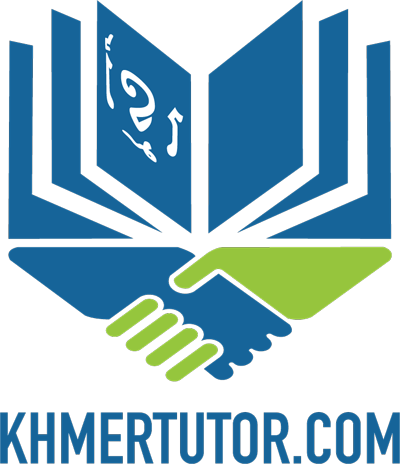STUDY TIP
Learning Khmer can be a daunting task, because many of the sounds are not replicated in English. Additionally, there are 23 vowels and 33 consonants in the Khmer alphabet. If you can remember a few key points, you will be well on your way to learning the Khmer language. Have fun!
- Memorizing Vocabulary – understand the meaning, remember it, and apply it
- The modifier is always after the word it modifies (the subject always comes first) ex. cold water or I want an iced tea
- The last sound of each word – word endings in Khmer is sometimes to difficult to hear.
- Sentence structure is nearly the same as English – ex. I am a student. I know you.
- When beginning to learn Khmer, always speak slowly (Khmer people don’t expect you to know/speak Khmer)
- Stress the first consonant and vowel and the last sound would be fade away pronounce the first sound clearly and the last sound would be silent.
- IPA or Transliteration – There is no standard one yet. Use your own style if you have one, or you just follow the teacher.

BEGINNER
Topics (add a few photos or video later)
- Greetings, introductions and farewell
- Pronouns
- Simple question phrases (What is this?)
- How to ask and answer simple questions
- Question words (What? Why? Where? When?)
- Numbers
- Directions
- Telling the time/date
- Parts of the day
- Introducing the verb, “to know”
- Food and restaurant
- Work
- Health
- Colors
- Clothes
LESSON 1
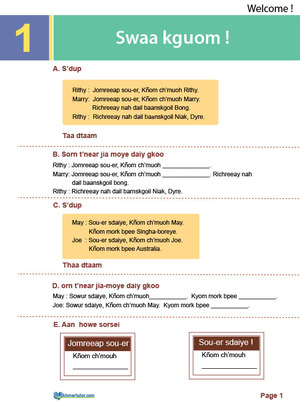
LESSON 2
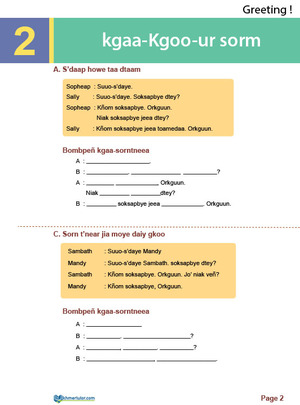
LESSON 3
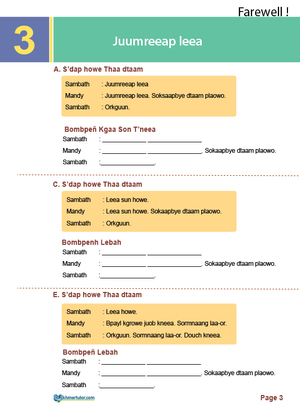
LESSON 4
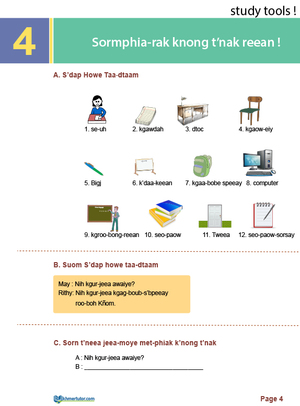
INTERMIDIATE
Intermediate level is designed for who has most basic level and they will learn more some rules, grammars, colloquial and slang ways of speaking Khmer language. Since they have basic level some students found out they have difficulty in conversation with Khmer people, it means they end up with stuck when people speak so fast (When they thought this foreigner(s) speak well in Khmer language). By learning those rules and those shortcut-words with various topics and contexts. Meanwhiles, most students will begin to learn to read or write Khmer.
ADVANCED
In advanced level, students will learn more comprehension. it means they will learn to understand through the context from different sources, such as newspaper, stories, movies, youtube, and students will learn to write their own story based on their experiences.
